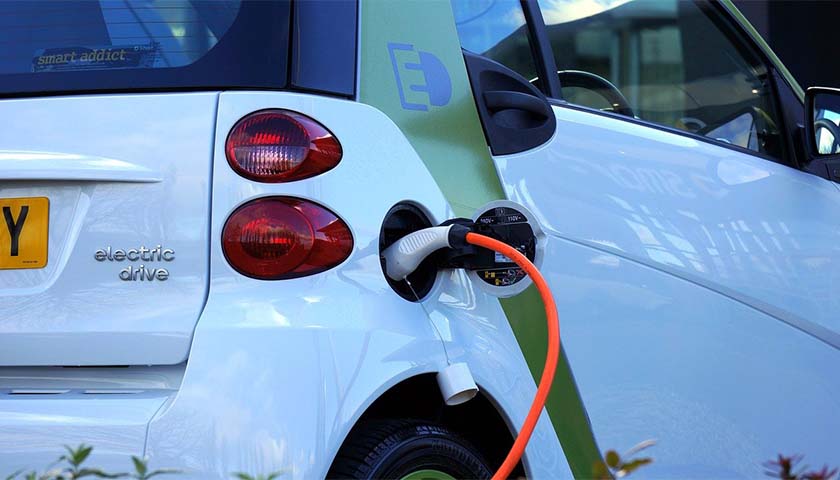by C. Boyden Gray
Russia’s invasion of Ukraine and soaring energy prices are a bracing wake up call to the West to abandon our anemic energy policies, which have pretended to be green but in reality have only shifted the dirtiest parts of our energy supply chains to bad actors like Russia and China. Western energy dependence on hostile powers limits our ability to preserve peace, to reduce our supply vulnerability, and to find the most cost-effective climate change solutions.
President Biden has acknowledged some of these problems, conceding that gasoline prices are too high and promising to do “everything in my power to limit the pain the American people are feeling at the gas pump.” But gas prices continue to rise, up by 10% in the last week.
One option President Biden has not yet explored is working with Congress to fix our incoherent domestic fuel policy to improve fuel efficiency across the board and reduce the amount Americans pay for gasoline. Currently, the EPA regulates fuels and automobiles separately, instead of as a single system. Automakers have the technological know-how to make much more efficient car engines, but regulatory barriers prevent them from doing so because they do not permit the use of cleaner fuels that would reduce carbon emissions and enhance performance.
The Next Generation Fuels Act – a bipartisan bill sponsored by Representative Cheri Bustos of Illinois – would eliminate these barriers and bring American fuel policy into the 21st century. It works by raising minimum octane ratings – which Mercedes-Benz has noted is “the single most important property of gasoline when determining engine design” – to levels that both automakers and fuel manufacturers agree are technologically and economically feasible.
High-octane fuel works like this: The higher the compression ratio in an engine’s cylinders, the greater its fuel efficiency. But you can’t increase the compression ratio indefinitely – at some point, the heat created by pressurization alone will prematurely ignite the fuel and air mix, a phenomenon known as “knock.” Knock limits efficiency and damages the engine. A fuel’s octane rating is the measure of how much a fuel can be compressed before knocking.
Automakers and researchers have long known that using higher-octane fuels would improve fuel efficiency in existing cars and would enable automakers to make new cars even more efficient. Indeed, American automakers already sell these more efficient, high-octane vehicles in Europe.
The Next Generation Fuels Act also requires tomorrow’s gasoline to be cleaner. Unlike traditional high-octane blends, which rely on toxic, high-polluting, and carbon-intensive aromatic chemicals like benzene to increase octane, the blends authorized by the Next Generation Fuels Act must meet stringent life-cycle limits on carbon emissions.
The bill enables this by authorizing the use of higher blends of ethanol, the cheapest, cleanest, and lowest carbon source of octane. New research from the University of Illinois at Chicago has shown that the carbon reductions attainable with high-octane ethanol blends would at least equal those that the EPA has said can be achieved through its plans for forced electrification.
The EPA has long known about the benefits of using ethanol as an octane source but has not moved to eliminate the regulatory barriers that stand in the way. As automakers reach the efficiency limits of low-octane fuels, the EPA has focused on reducing emissions almost entirely by pushing electrification. The Next Generation Fuels Act levels the playing field, allowing traditional automakers to compete with electric cars through innovation to find the most cost-effective ways to reduce carbon emissions – a win for consumers and the environment.
The Next Generation Fuels Act is a natural fit with President Biden’s climate and national security priorities. Even with sales of electric vehicles doubling in 2021, they still accounted for less than 4% of new vehicles sold and 1% of vehicles on the road. Raising octane levels would improve the efficiency of the other 99% of existing cars immediately, sometimes by as much as 5%. The benefits for new cars would be even greater, as much as a 10% fuel efficiency improvement.
And because ethanol is typically less expensive than both gasoline and aromatic additives, increased use of ethanol will also lower the price you pay at the pump per gallon. Indeed, widespread use of low-level blends of ethanol as an aromatic replacement has saved American drivers on average 68 cents per gallon of gasoline over the last decade. These savings are likely to improve over time with the introduction of mid- and high-level blends, especially because ethanol’s high octane rating will allow for greater use of domestic shale oil, which has considerably less natural octane than traditional crude.
In the coming months, the Biden administration and both parties in Congress should work to build a fairer, stronger, and more independent American energy policy. The first step they should take is passing the bipartisan Next Generation Fuels Act to allow competition in the race to find the lowest cost-per-ton carbon reductions, as well as expanding our energy independence.
– – –
C. Boyden Gray served as White House counsel to President George H.W. Bush and as Ambassador to the European Union and Special Envoy for Eurasian Energy under President George W. Bush. Mr. Gray’s law and strategy firm, Boyden Gray & Associates, represents multiple corn growers associations and other clients interested in fuels policy.





